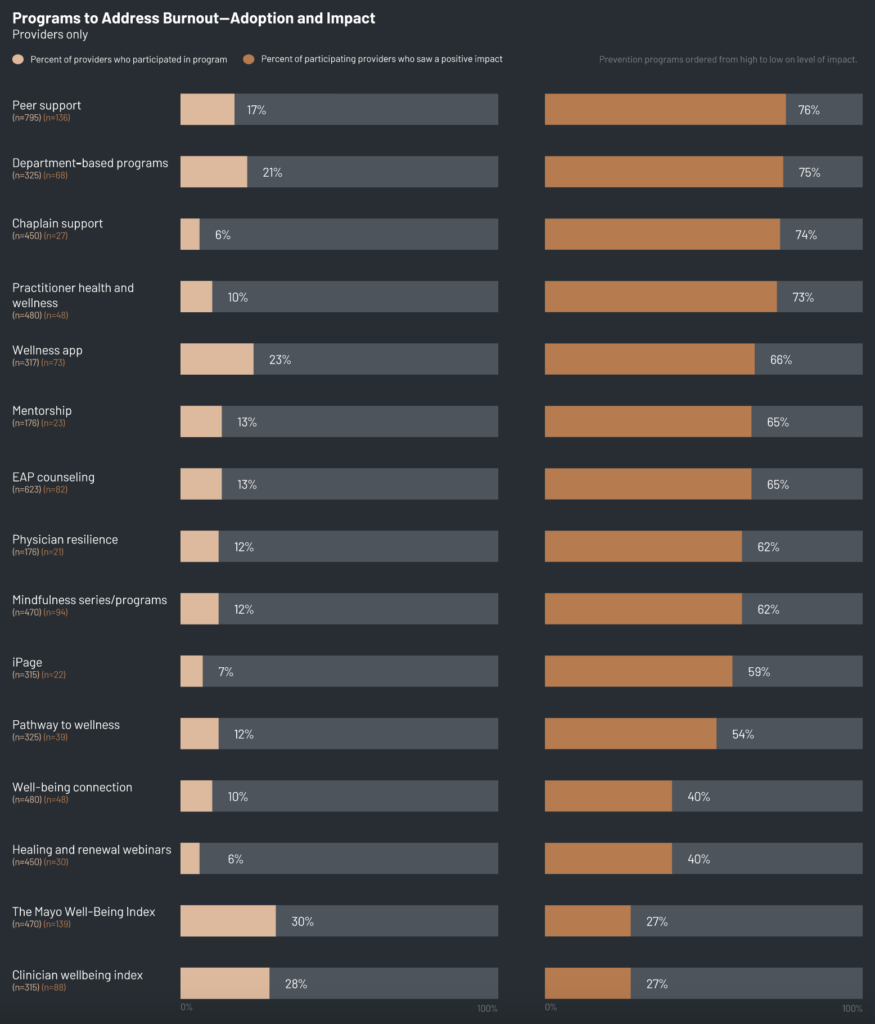Provider burnout and the EHR experience
Burnout remains a real threat, exacerbated at times by EHRs, but organizations that implement prevention programs are seeing real results.

Following the COVID-19 pandemic, healthcare organizations have seen massive provider burnout, which ultimately leads to issues with staff shortages and quality of patient care. What can organizations do to alleviate and prevent provider burnout? Since 2018, the Arch Collaborative has conducted research on burnout, with particular focus on its intersection with the electronic health record.
In the Collaborative’s EHR experience survey, clinicians share their current level of burnout and identify any contributing factors. Using responses and other measurements from the Arch Collaborative, this report details what organizations can do to combat provider burnout. This report focuses on physicians, residents, fellows and advanced practice providers — called “providers” throughout.
High-level insights include the following:
• Rates of burnout are still very high but appear to have plateaued since 2021,
• Burned-out clinicians are more likely to want to leave their organizations.
• High trust in organization leadership/IT around the EHR is correlated with lower provider burnout.
• Reducing the after-hours workload can decrease burnout significantly.
• Organizations that implement burnout-prevention programs are seeing positive results.
Burnout levels out, but staffing shortages hurt
In 2018, when the Arch Collaborative first began measuring burnout, 27 percent of providers reported at least some degree of burnout, meaning they selected one of the following responses regarding their condition (definitely burning out, symptoms of burnout won’t go away or completely burned out).
Burnout has increased since, with 2021 seeing a large spike in the percentage of providers who report at least some amount of burnout. However, rates have leveled off in 2022 and are holding steady at 34 percent of respondents — the same percentage as reported in 2021. The same trend is true for other, non-provider clinicians, who were not measured in this study). Since 2020, the percentage of providers reporting higher levels of burnout has increased slightly — particularly those who report they are definitely burning out (up 3 percentage points).
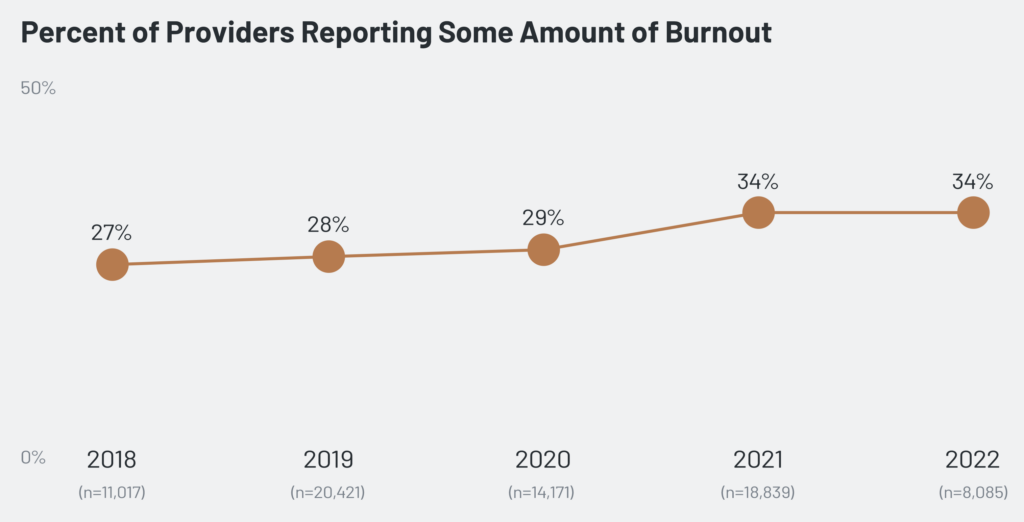
Most factors measured as contributing to burnout have become less prevalent than they were at the start of the COVID-19 pandemic. There are a few exceptions. The percent of providers citing a chaotic work environment as a contributing factor has stayed consistent at 28 percent both before and after the pandemic.
Staffing shortages — a newly-measured contributing factor as of 2021 — are more frequently reported by all types of clinicians, especially in the last year. In 2022, 40 percent of surveyed providers said staff shortages contribute to their sense of burnout. As providers report higher degrees of burnout, they are more likely to report a higher number of total burnout contributors.
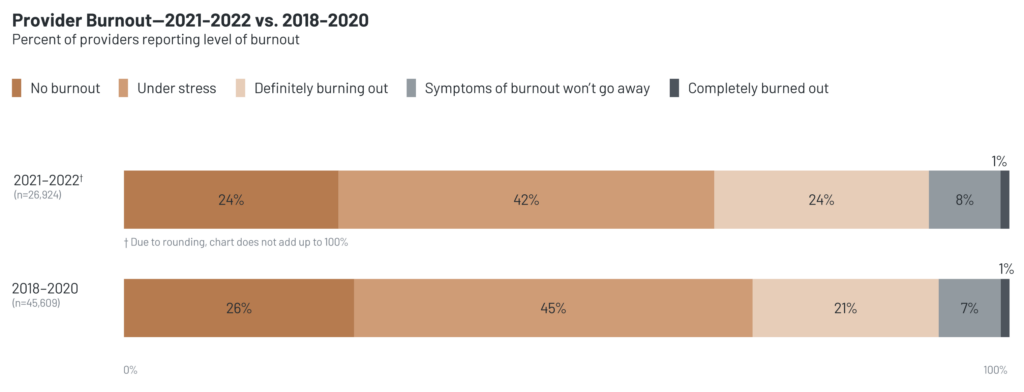
In the period before the pandemic, only 29 percent of providers reported higher levels of burnout, compared with 33 percent post pandemic.
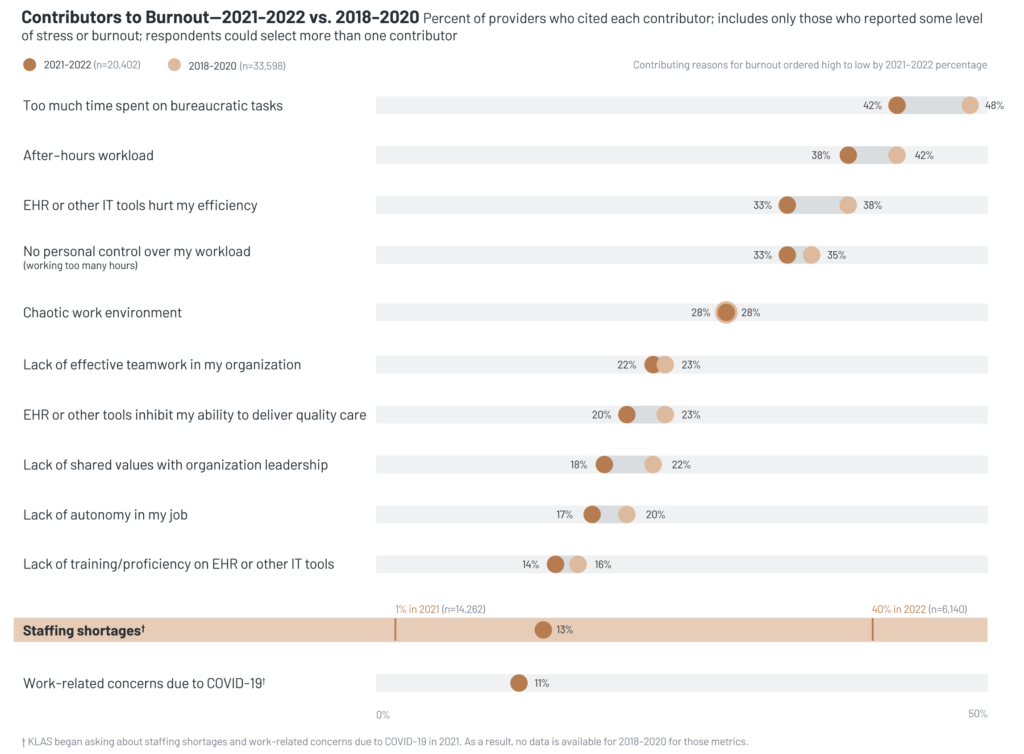
Burnout prompts clinicians to leave
One potential cost of high clinician burnout is clinician turnover. Nearly one-fifth of respondents to the Collaborative survey report it is likely or very likely they will leave their organization within the next two years.
That suggests that Collaborative members — and the industry as a whole — could be facing significant turnover expenses. Based on existing literature outlining the cost of turnover, estimates suggest that the expense could be as high as $1.9 million to $3.4 million per organization to replace nurses and $6.4 million to $25.6 million per organization to replace physicians.
The combination of these estimates and KLAS models on the correlation between clinician EHR satisfaction, burnout, and turnover shows how much of this cost could be attributed to EHR dissatisfaction. This is estimated to be $93,000 to $170,000 per organization per year for nurses and $319,000 to $1.3 million per year for physicians. These estimates illuminate the potential financial cost of not addressing clinician dissatisfaction with the EHR systems.
Clinicians who are most likely to leave include clinicians who report they feel completely burned out (61 percent); clinicians who strongly disagree that their organization has done a great job implementing, training and supporting the EHR (35 percent); clinicians who are highly dissatisfied with the EHR overall (32 percent); clinicians who strongly disagree they personally have learned he EHR well (32 percent); and clinicians who strongly disagree that ongoing EHR training or education is helpful and effective (31 percent).
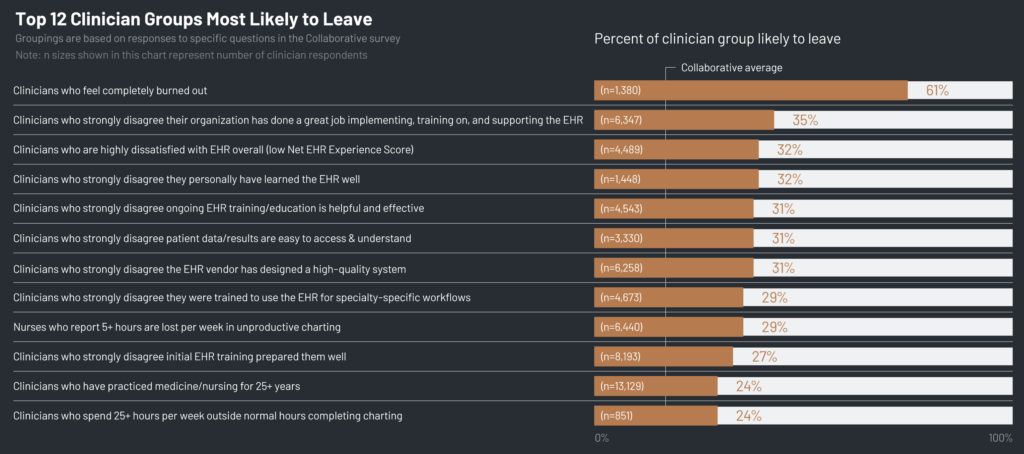
The impact of trust in leadership and IT
One key to lessening provider burnout is strong provider agreement that their organization delivers well around the EHR — specifically, that the organization has done a great job of implementing, offering training and supporting the EHR.
Higher trust in organization leadership and IT in these areas is tied to providers being less likely (by 16 percentage points) to feel burned out. Even among providers who spend more after-hours time in the EHR — who would be expected to have higher rates of burnout — trust in leadership and IT around the EHR is correlated with lower burnout. Providers who chart six or more hours a week but have trust in their leadership and IT experience burnout rates lower than the Collaborative average.
Providers who both trust their leadership and ITand chart after-hours for less than five hours per week have an average burnout rate 19 percentage points lower than other providers.
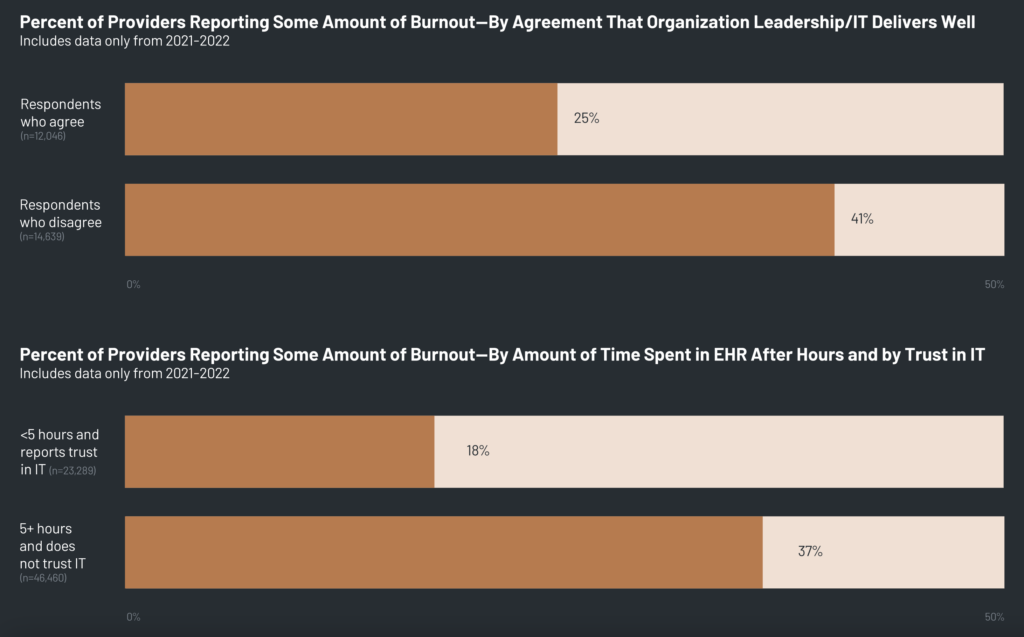
Timely, well-communicated EHR fixes help
At times, providers can view IT as a black hole, and this dynamic reduces interactions and collaboration between the two groups. However, providers who say they believe they are supported in their EHR by organizational IT teams report lower levels of burnout.
One of the most telling indicators is whether EHR fixes are made in a timely manner. In general, providers who agree with this statement and report trust in IT have an average burnout rate 16 percentage points lower than their peers. Additionally, communication around EHR changes is important — providers who agree changes are well communicated have a burnout rate that's 11 percentage points lower than those who disagree.
When IT and support personnel are more transparent — for example, they update providers regarding requested changes — providers say they feel more supported and empowered around the EHR experience, and their overall experience in the organization. This transparency is also tied to lower burnout.
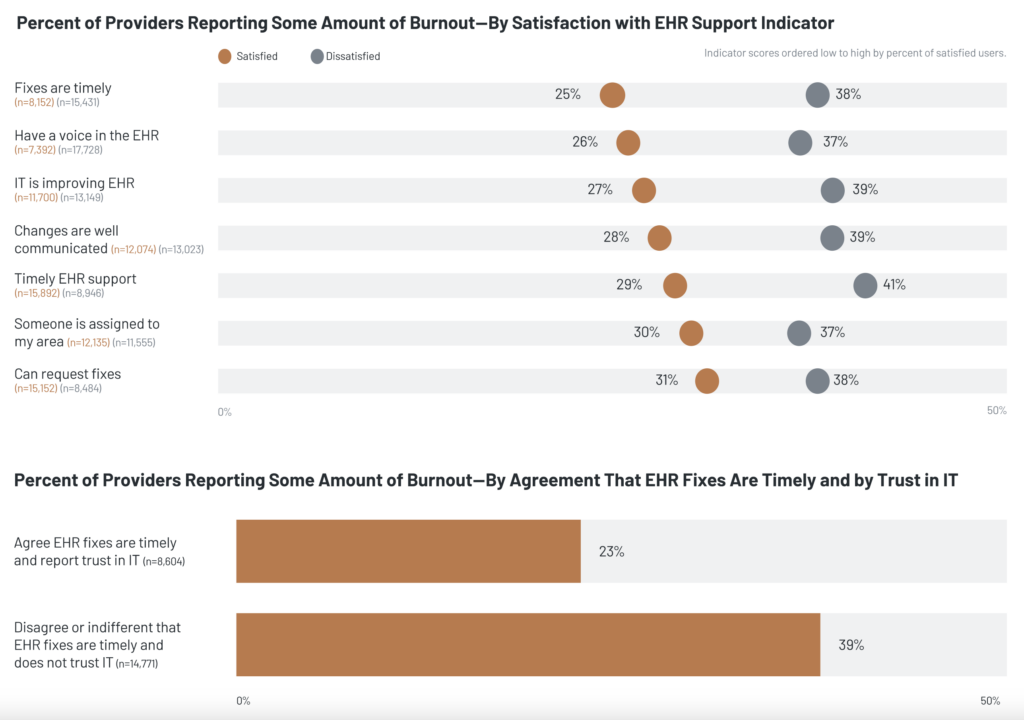
In addition, healthcare organizations have successfully improved their clinicians’ experience at work by implementing programs specific to reducing burnout. Many organizations that participate in the Arch Collaborative have asked their clinicians about participation in a burnout-prevention program and whether the program was helpful. KLAS recommends that all organizations implement one or more of the programs, such as providing peer or chaplain support, offering department-based programs, wellness apps, mentorship or other types of wellness support efforts. All types of initiatives have significant potential to alleviate provider burnout.
